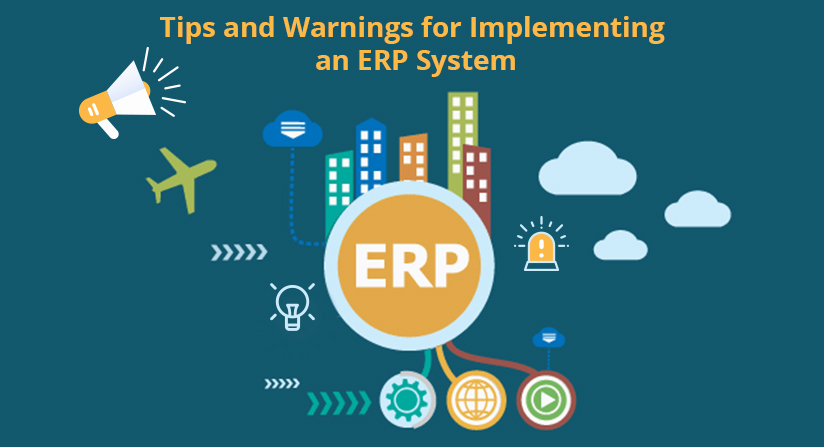Back when I was virtually full-time working with clients on ERP implementations, I had a trick that seemed to work to overcome many of the issues around keeping a project on track and on budget. I would take the entire plan, all the steps, and put them in a spreadsheet which I printed out really big over multiple pieces of paper.
Capturing the vision with visuals
I would pin all those sheets on a big board, first step at the bottom, going all the way up to go-live and post-go-live, to a big “SUCCESS – PROJECT COMPLETE” at the top. As the project progressed, we used a green highlighter to fill in the steps completed, each line had a target date and a completed date. If the plan needed changing, we updated the spreadsheet and replaced the relevant sections. That board was kept in a prominent place, often the cafeteria or staff lunch room. Why? Because the four biggest reasons why implementation projects go wrong are:
- Disillusionment kicks in as project realities surface.
- Lack of buy-in, from the project committee to the individual workers.
- The plan isn’t kept up-to-date.
- There is insufficient Issue-tracking and Status reporting.
A Plan, a Budget, a Project Team
Every implementation project must start with a plan and a budget. Too often, the vendor consultant is left to devise the plan and ends up trying to impose it on the client (this never works). When the project kicks off, there needs to be a Project Team. This team should consist of:
- The client’s project manager – who is responsible for liaising with the vendor, chairing the weekly review meeting, and managing the budget.
- A senior representative from each department.
- The vendor’s consultant(s).
- The independent project manager if one is engaged.
When a project starts, acceptance is at a euphoric 100% before taking a dive as the hard work bites. Gradually it rises to a plateau where it tends to stay.

The secret to a successful project is making the dip as shallow as possible, and lifting the plateau as high as possible – if the first is successful, the second usually follows.
So, why does this happen? Generally, two reasons:
- Incomplete discovery.
- Stress on those involved.
Discovery Stage
Discovery cannot be limited to department heads or the senior representative of each department. They can never know every task each staff member regularly performs, and which reports they are required to generate. I remember on go-live day for one implementation when a clerk in finance asked “Where’s the report on overdue invoices for each salesperson? I have to get it out to them today”. It was easy enough to produce, panic averted, but we never knew that someone in finance had to generate a report that sales couldn’t tell us about. Just a task they were given and had always done.
Discovery can be difficult. It’s the single most critical step to a successful implementation, but too often insufficient time or budget is allocated to it. I maintain that for every day spent on good discovery, you save a week in implementation. It is often difficult to capture sufficient time from each staff member to have them go through every task they perform, every report they need, they all have jobs to do. I suggest several sessions with each person, giving them time to think about what they do and remember things they didn’t first time. Give them time to think through their work day / week / month before revisiting with them and give them a form to write things down as they think about them.
Implementation is Stressful
Stress levels become very high for all involved in an implementation. Staff are trying to learn a new system, while still doing their job on the old system. Often long hours are involved. The project team needs to be acutely aware of this and be fair to all employees.
A good idea, (and it should be budgeted for) is to bring on some temporary workers to help ease the load. Temps should be used to work on the existing system and should be trained on it before the implementation starts, and with a break of at least a week between that training and the implementation start date. It is never fair to use temps on the new system. I have too often seen temps shine on the new system, with existing employees getting disillusioned and resigning. Sometimes that ends up being a good thing, but existing staff should be given every opportunity first.
Essentially, the project Team need to be at the forefront of Change Management. There will be new ways of doing things and those affected need encouragement and help to make the changes.
Accounting / finance departments are always the worst affected, they spent 90%+ of their time on your computer system. Be aware of this.
The Production Manager is almost always the hardest to pin down to learn the new system. Inevitably, this person is busy all day fighting fires on the shop floor. You need to show how the system can eliminate / reduce that firefighting. Perhaps the best way is to take production management mobile, allowing the system to help that management right on the shop floor.
The third department that always gave me problems was quality assurance. For years they have done things their way, using their own systems (often largely manual) and can’t see the benefit of becoming part of the ERP system. Often, this department is in “quality control” mode, and they see their data within the system as being of benefit to everyone else but not themselves. Moving them to a “quality assurance” mode and pointing out they have the biggest influence on efficiency and cost-saving in the organization, is the best way to get them on-board. A little ego-stroking always works wonders with the QA department.
There are other examples that you need to look for them and manage. After all, the aim of a successful ERP implementation is to bring everything “under one roof”. One good way is to gather everyone from one department together and get them to discuss where they see their place in the organization, and their contributions to it. The answers may surprise you. Keep encouraging everyone, this is where you will get your motivation from. One client even had t-shirts printed “I survived the xxxx implementation”.
Good Data Will Set You Free
Clean Data. Every implementation needs this starting point. It’s a good idea to clean up obsolete data and eliminate discrepancies. Simplification can also help. I had one client who had more than 10,000 customer / product / discount combinations. We ran a report that showed that 9,990 of them were for customers who accounted for only 5% of the company’s total business. Those customers were shunted off to the wholesalers and the discount structure vastly simplified. Take time to re-evaluate such things.
Prepare for Bugs with Proper Training
Training & Issue Reporting are parallel activities. You cannot give enough training, you need to train your own trainers, so they can repeat with those staff who need it. Individual staff learn at different rates, some need a lot more help. If you don’t have your own trainers, you get the situation I encountered many times as a consultant, the CEO walking past and asking if I was now on the payroll! Training your own trainers reduces budget allocation for vendor consultancy, and it brings a sense of ownership and independence to the client.
Standard Operating Procedures (SOPs) are critical to demonstrate compliance and to test against for final system sign-off. It is important that staff using the system should not be constantly referring to them as they perform their tasks. In training, it is imperative to have everyone respond intuitively to the screen in front of them, and how that relates to performing the task.
It is in training, using real company data, that any issues are encountered. Having real staff perform real transactions the way they need to work, is more valuable than any formalized system testing. That is not to minimize system testing, it is an important step that creates the baseline for system acceptance sign-off.
Those issues need to be dealt with immediately, with expectations set for resolution. Any hold-ups resulting from issues, or delays in training, will affect the plan. The plan needs to be changed to accommodate these and the changes communicated to everyone, update the board! While planned vacations for individuals should be part of the training plan, the unexpected always happens that needs accommodating.
Meet as Often as Needed
The Weekly Review meeting is critical. Here, all issues must be raised and stay on the table until they are resolved. All changes to the plan must be discussed and communicated. Each step of the plan should have a sign-off document, work completed vs the time budgeted should be managed, and sign-off of the consultancy invoices done. Issue tracking and status reporting is a key tool for clear communications among all impacted by the ERP project. If it is not managed well, it is the single biggest factor in de-railing your implementation plan.
A really important function of the review committee is to not allow too many exceptions or change orders and make sure no ‘work-arounds’ using excel, etc. creep in.
Some other things that could derail your project are:
- Not budgeting sufficient time & money if you are taking a big leap in technology.
- Treating compliance as an after-thought – make it integral to the project.
- If you are moving to the cloud, over-estimating staff savings.
- Also in the cloud: too much customization – cloud environments are designed to be used in a standardized way.
- Not having an ongoing maintenance plan to keep the system moving ahead after implementation.
So, what are the steps to a successful implementation?
- Make sure senior management is on board.
- Establish a cross-functional team to oversee implementation. This must be an interdepartmental implementation team. It needs decision-making authority and a clear escalation path when facing decisions beyond their authority.
- Document the processes & tasks your staff perform every day / week / month and match them to how the new system will allow them to be performed. This is discovery, it differs from establishing your business objectives that you used to make your system selection because this is grass-roots working.
- Come up with an implementation and support plan. Set realistic timeframes and document staff availability into the plan. A big part of this must be training, and “training the trainers”.
- Train, train, train!
- Manage issues and delays immediately.
- Update the plan.
- Communicate the changes.
- Make your vendor consultant your friend and colleague, not the enemy.
The OptiProERP team have many years of successful implementation experience behind them and have worked with a wide range of clients all with varying needs and expectations. Ask us how we go about it and learn more about our implementation process by visiting https://www.optiproerp.com/request-demo/.
Follow Us









